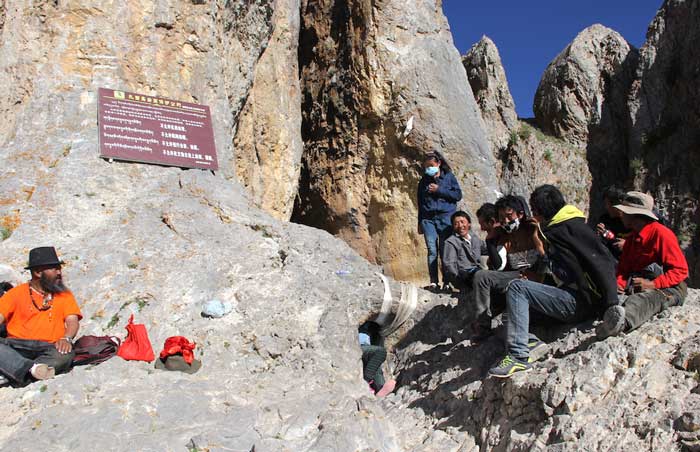5 Tips to Plan a Successful Tibet Trip
Planning a successful Tibet trip may, at first, seem an arduous task. The paperwork appears to have been invented simply to confuse. Each place on your list to visit has at least two different names and five different spellings. You are traveling with stubborn friends. You wish you had all the information began the process. Why are maps so hard to find? And who likes dealing with consulates anyways?
Three words in case you are worried about any potential headaches: it’s worth it. Though no plan is bullet proof, we’d like to share a couple of tips with you. That can ease the process and make sure your trip goes smoothly.
1. Thoroughly examine a map of the People’s Republic of China.
Don’t confuse yourself with guidebooks and too much online research just yet. First, get a map of China and read it closely. Notice where national roads and railways are and aren’t. Better still, if you can get an administrative map, read the names of the provinces and prefectures to find out which areas are Tibetan cultural areas.
Notice that the area labeled “Tibet” is the only area you need a Tibet permit to enter. Many travelers get tripped up on this one, especially if they are planning trips to the Kham and Amdo: not all of Tibet is included in the area that says Tibet on the map!
If the places you want to travel Sichuan, Qinghai, Gansu, or Yunnan, you won’t be needing a Tibet permit, just a valid Chinese Tourist Visa! If you are feeling wary of traveling on an escorted tour. Visiting Tibetan areas outside the Tibet Autonomous Region is a great option.
2. Too much is better than too little for planning a Tibet trip
If you are traveling to the Tibet Autonomous Region. You must list every destination you intend to visit when you first apply for your Tibet permit. Let’s say, for example, that you are considering a visit to Everest Base Camp but haven’t made up your mind. Better to include it in your itinerary as you can subtract sites if you are not feeling well. But will not be allowed to add sites after the permit has been issued!
3. Follow the visa advices your travel agency gives you!
To planning a Tibet trip, sometimes people have trouble getting a Chinese Tourist Visa before they even begin their permit process. If your Tibet travel agency tells you it’s better not to mention that you are going to Tibet when you submit your paperwork…heed their words! You aren’t lying. It’s just the crazy procedural way things work. Focus on getting your visa and permit follows upon arrival to China. Telling a Chinese consulate that you plan to travel to Tibet sometimes leads to outright visa rejection because you do not have the necessary permits (even if you say you plan to get them). Yes, it’s ridiculous, but be ready to roll with it!
Many rules are subject to change on a whim and its safest to assume that whoever you have helping you on the other end knows what they’re doing. Decisions in China are often subject to personal connections, an official’s mood, and other human variables that are just as random as the weather. Remember that the system is different from your home country, even and especially how people relate to planning a Tibet trip and deadlines, and try not to let the process stress you!
4. Take a Tibet trip to the doctor.
Before you depart, it might be a good idea to take a Tibet trip to the doctor, especially since you will be traveling at high altitude. If you have any previous health conditions, check in to make sure they will not affect your Tibet trip. Even if you don’t have previous health conditions, going in for a checkup can alert you to conditions you may have known about (like high blood pressure or blood clots).
5. Go with an open heart and an open mind.
Many travellers have a romanticised image of Tibet as a secluded land of monks. Inaccessible and untouched by the modern world. In reality, Tibet has a long history of trade and exchange with its neighbouring countries. Tibetan pop music exists alongside traditional songs. And young people here dress much the same as young people in other parts of the world. Monks can be seen driving cars and using cellphones because Tibetan monastic traditions do not require total separation or seclusion from the outside world (except in some forms of retreat).
It is important to remember that  Tibet and Tibetan people are not part of a living museum, but a living, breathing culture. Buddhists have fought wars too, lamas are not above human emotions, and many people dream of seeing the world; just like you! Looking beyond what we expect to see can help us appreciate a deeper type of beauty and ensure that we have a richer travel experience. Determining pre-departure that one will travel with their ears open is the best planning a budget Tibet tour anyone could do!
Tibet and Tibetan people are not part of a living museum, but a living, breathing culture. Buddhists have fought wars too, lamas are not above human emotions, and many people dream of seeing the world; just like you! Looking beyond what we expect to see can help us appreciate a deeper type of beauty and ensure that we have a richer travel experience. Determining pre-departure that one will travel with their ears open is the best planning a budget Tibet tour anyone could do!
Essential Internal & External Links That May Help You:
Reservation Policy
Tibet travel tips
Tibet travel permit
How to travel to Tibet
About Us
Things to do in Qinghai
How to Visit Tibet
Trekking in Tibet
Plan a tour to Amdo
Our Office Direction


Comments